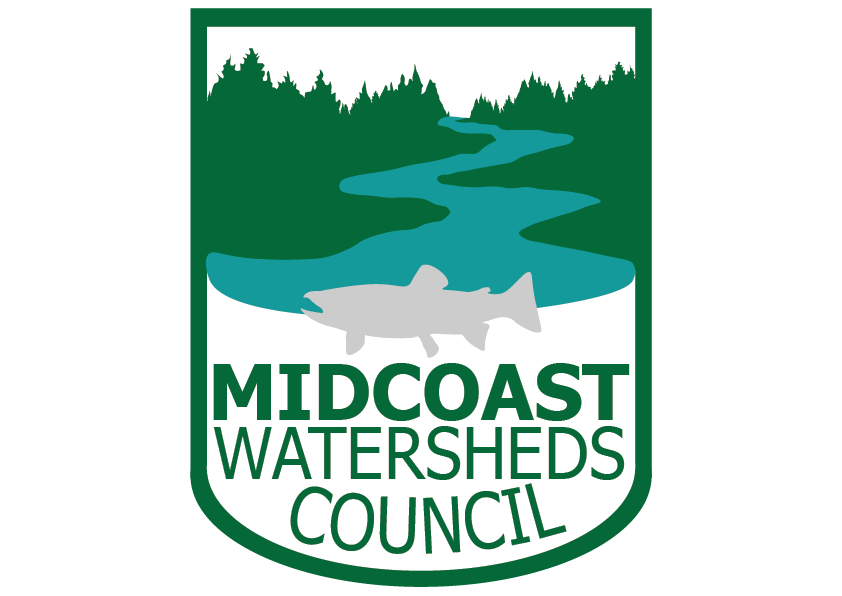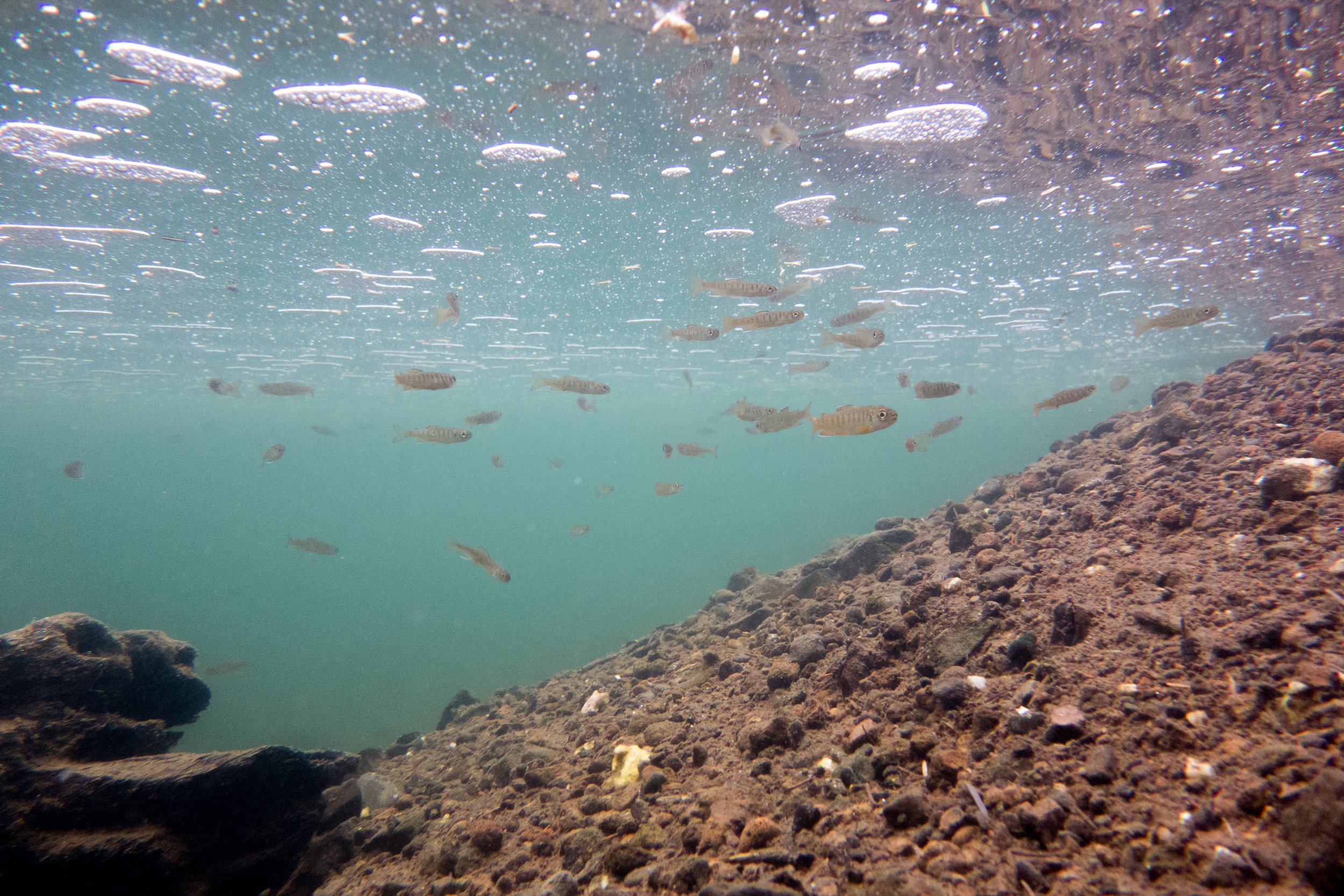What are Coho Salmon?
Coho, or Silver Salmon (Oncorhynchus kisutch) are a native species of anadromous fish found in all watersheds that MidCoast Watersheds Council works in. Coho lay eggs in small gravel nests known as redds within coldwater streams in the upper reaches of the Oregon Coast Range. Upon hatching, most Coho fry spend the first year of life within their home stream, where they eat small aquatic insects. These fry are particularly temperature sensitive with a 68° F mortality threshold. After approximately 18 months, young salmon migrate downstream toward the ocean, though there is some variation in when Coho move or are washed downstream. During this downstream migration Coho, like all salmon, undergo a process called smoltification, where their bodies adapt to live in brackish water within estuaries and saltwater in the ocean. If they survive without getting eaten by predators, Coho can spend a few years in the ocean before returning to freshwater spawning grounds. During spawning, Coho lose the silvery color they are known for and turn red. At spawning sites, females construct small nests in the gravel and lay eggs for males to fertilize. Following spawning, adult Coho die, returning marine derived nutrients to terrestrial habitats and providing a seasonally abundant food source for wildlife, such as black bears.
Why are they important?
Coho salmon are an iconic species in the Pacific Northwest. These fish provide vital ecosystem services throughout all stages of their life. As juveniles, they are a source of food for many species of larger fish, birds, and mammals in upper order streams, estuaries and nearshore ocean waters. As migrating adults, they alter streambeds through creation of redds, providing habitat for many other aquatic organisms. As they die on the spawning grounds, Coho are a source of food for wildlife, while also providing nutrients to the water column and surrounding forested areas. Economically, salmon, including Coho, are a commercially important fishery, with landings in 2022 totaling over 13 million lbs equating to $16 million dollars. Coho and other salmon are also a popular recreational fishery, further connecting Oregonians to salmon culturally and economically.
What are the Threats?
Oregon Coast Coho salmon are listed as threatened under the Federal Endangered Species Act. Loss of quality freshwater and estuarine habitat for juvenile rearing pose major challenges to OC Coho recovery. One of the ways this manifests is through reduced instream complexity, because these fish rely on a variety of different water flow conditions, bed materials, and depths. Across the Oregon Coast Range, removal of large woody debris and channelization of creeks has reduced access to material for spawning redds, and decreased the number of deeper pools necessary for juvenile Coho to shelter in. Fish passage barriers like inadequate culverts, tidegates, and dams further limit available habitat needed for survival. Climate change also poses significant challenges to OC Coho recovery. As an example, a heat wave on the central Oregon Coast in 2021 led to prolonged high water temperatures in typically cool streams, thereby inhibiting juvenile Coho growth. Extreme weather events and temperatures, as well as increased incidence of drought and wildfire compound existing stressors that are already impeding OC Coho survival and recovery.
Why are we Using edna?
We used eDNA to locate streams where OC Coho are present to prioritize restoration actions. Restoration in freshwater and estuary habitats provide an opportunity to help rebuild OC Coho populations. The preference for high order cold streams for OC Coho spawning means that conducting eDNA sampling there indicates fish presence throughout a given stream. The proclivity of adult salmon to return to their natal streams means that monitoring individual streams can give information on how suitable that stream is for salmon rearing. Sampling below and above potential fish passage barriers can also help identify points for restoration to allow for easy fish movement. Coho salmon are therefore excellent targets for an eDNA Survey.
Photo- Midcoast Staff


